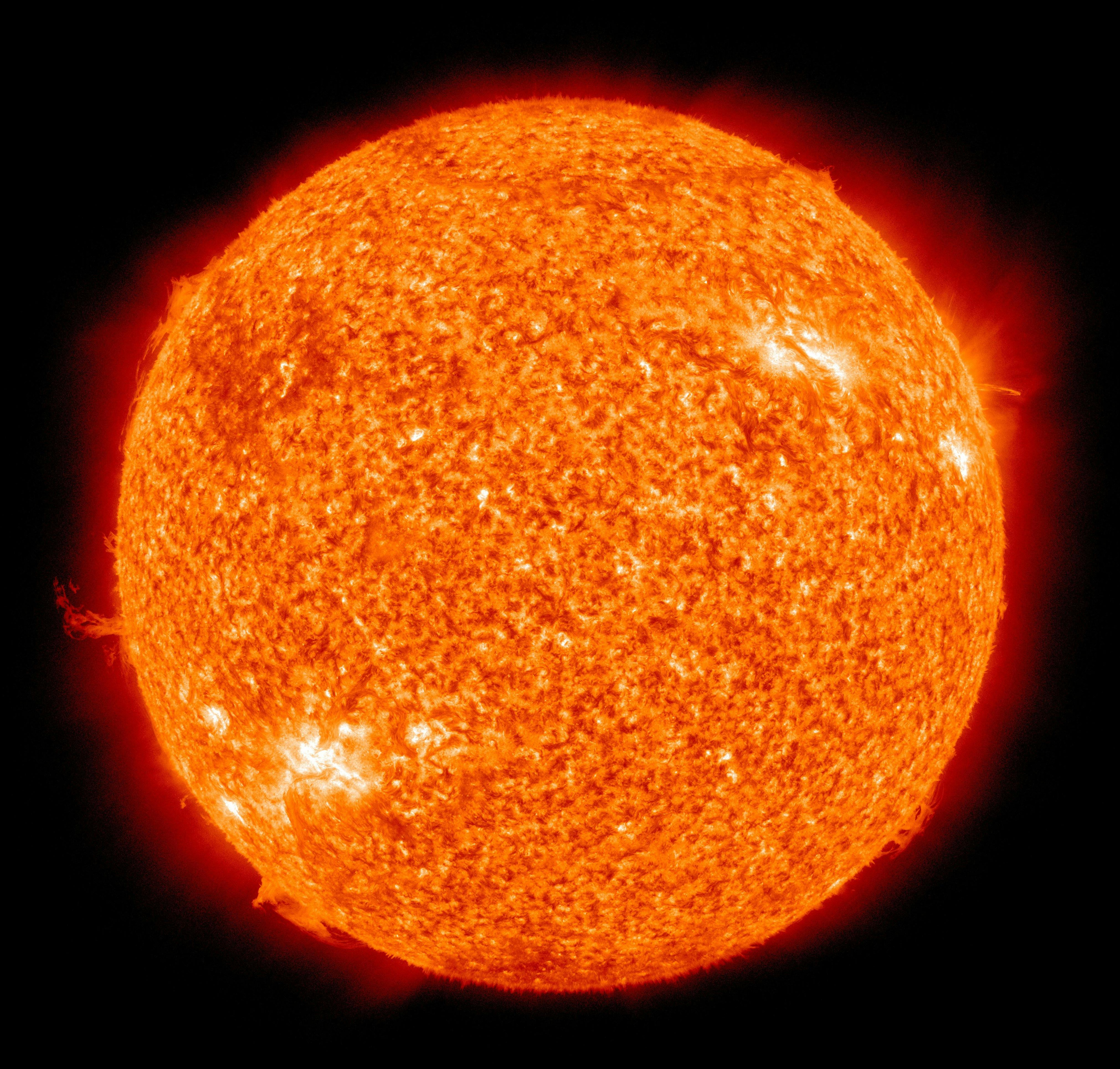1.1 Solar Energy Conversion - Overview
1.1 Solar Energy Conversion - Overview

The energy that is naturally available from the Sun is quite enormous. The Sun delivers 1.2 x 105 TW of radiative power onto the Earth, the amount that surpasses any other energy resource by capacity and availability. That would convert to 3.78 x 1012 TJ of energy per year. For comparison, according to Crabtree and Lewis (2007), all recoverable Earth's oil reserves (~3 trillion barrels) account for 1.7 x 1010 TJ of energy. Thus, the sun supplies this amount of energy to the Earth in only ~1.6 days!
A few more stats:
According to reviews of University of Oxford [1], the current global energy utilization is close to 1.6 x 105 TWh per year (i.e. 5.76 x 108 TJ/year). If we again compare this amount to the global solar energy flux, the Sun is able to cover this demand in only 1 hour and 20 min! This is sort of mind blowing..
However, to be utilized, the solar radiation needs to be converted into other forms of energy, such as electricity or usable heat. The question is: can we effectively do that at the scale of our demands?
Evidently, the solar resource contains enough energy to cover those demands. However, the critical limitations in solar energy conversion will be the efficiency of existing technologies and availability of earth materials to scale up those conversion devices.
What's in solar spectrum?
Before considering various types of conversion of solar energy, let us briefly review what solar radiation actually is. Here are a few main things we know from physics:
- Solar energy is electromagnetic radiation.
- Main components of solar radiation reaching the Earth (wave length, λ, range give in parenthesis):
- Infrared (52 - 55%
- Visible (42 - 43% )
- Ultraviolet ( 3 - 5% )
- The most solar radiation reaching the earth surface is essentially in the wave length range nm.
- Quantum (unit energy) of electromagnetic radiation - photon (E = hv) - is often a more convenient term in the mechanism of solar conversion.

Main types of sunlight conversion
This mix of various types of electromagnetic radiation allows the sunlight to be converted through a variety of physical mechanisms, which are:
- conversion to electricity (photovoltaic effect);
- conversion to usable heat (for example, via thermal collectors);
- conversion to matter / fuel (for example, production of biomass through photosynthesis).
Now we are going to take a closer look at various technologies that are able to convert solar radiation and learn what the main objectives and challenges are there.
Read the following article to overview the main types of solar energy conversion, and try to find the answers to the self-check questions below.
Reading Assignment
Journal article: Crabtree, G.W. and Lewis, N.S., Solar Energy Conversion, Physics Today, 60(3), 37 (2007) [3] - 6 pages
This article reviews the multiple possibilities to convert solar radiation into usable forms of energy. It discusses the key conversion technologies, their efficiency, and scientific research directed towards raising the conversion efficiency through better understanding the physicochemical phenomena.
Check Your Understanding - Essay Question 1
What is energy conversion efficiency? How would you define it in your own words?
Check Your Understanding - Essay Question 2
What is Shockley-Quesisser limit, and what is its value?
Check Your Understanding - Essay Question 3
What are possible approaches to reach higher efficiency of sunlight to electricity conversion in solar cells?
Check Your Understanding - Essay Question 4
What are possible approaches to reach higher efficiency of sunlight to heat conversion?
Check Your Understanding - Essay Question 5
What are possible approaches to reach higher efficiency of sunlight to fuel conversion?
As we perceive from this reading, numerous technologies and areas of research and innovation in solar energy conversion target the overarching objective to raise the device efficiency, thus making it more economically viable for implementation. This is especially true in the light of quite high capital costs for solar energy systems. This challenge is related to both initial materials and manufacturing.
We will talk more about efficiency on the next page of this lesson.